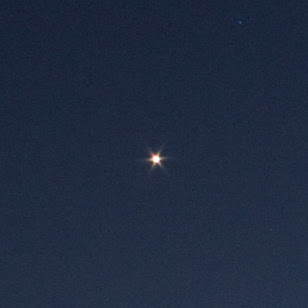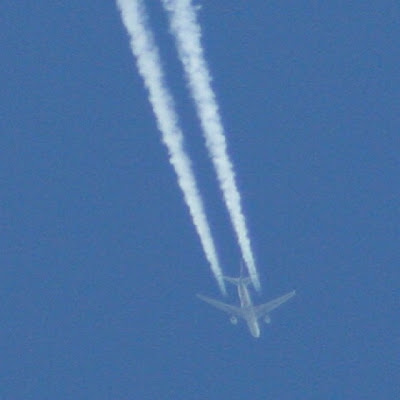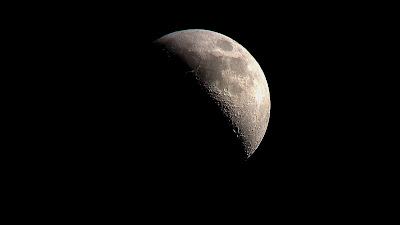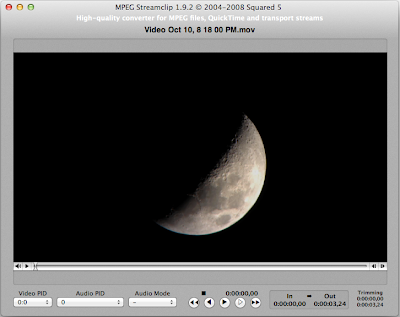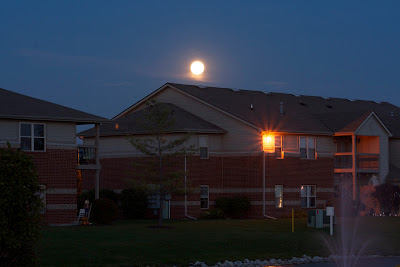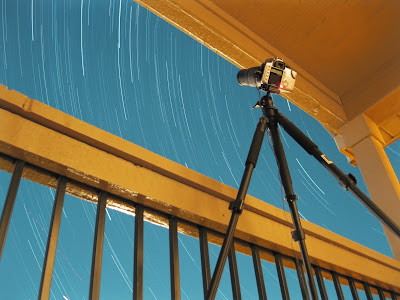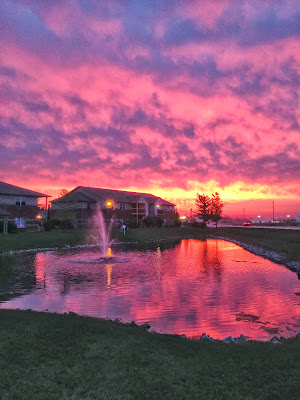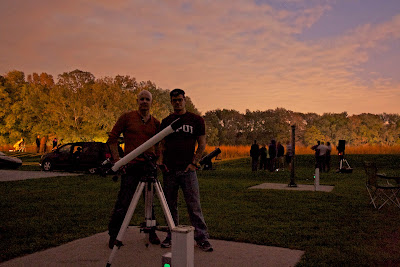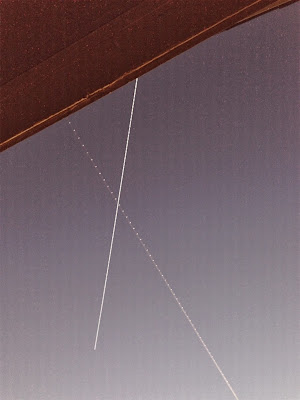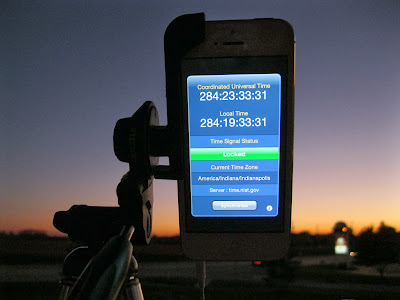So far this month we've had some incredibly clear skies, and as many as 4-5 in a row. I've been getting out as often as I can, and started chipping away at the
October observing list. I've got 4 down, 2 to go for a certificate, total of 11 objects, and 4 that are probably beyond my gear (so realistically 7 I could get this month). Here's what I've got so far...
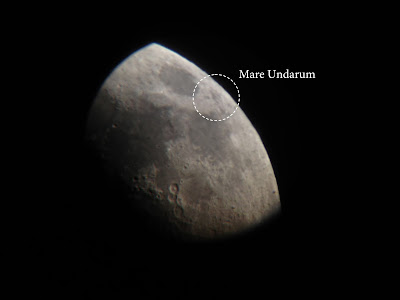 |
| Mare Undarum, first quarter moon, iPhone through Meade MH9mm eyepiece |
Ok so it's not the best photo of the moon ever. I took it with my iPhone looking through the eyepiece of my Meade 285 refractor. I wanted to demonstrate that I know what sea I was looking at, instead of just taking a photo of the whole moon and pointing it out later in Photoshop.
I also took a video of the moon that night with my iPhone, but I've been having some difficulty converting the .mov file into an .avi that Registax can read. It's very picky, and I guess any .avi over a certain size forces the program to switch into a different setting. Yeah, I'll have to keep tinkering.
I also found out that the iPhone camera burst mode will not activate with the Apple headphones as a remote shutter release. I guess I could take rapid shots with something like Night Cap, but there's still the problem of holding the phone up to the eyepiece (or mounting on a tripod that is pointed down looking through the eyepiece, which takes forever to adjust).
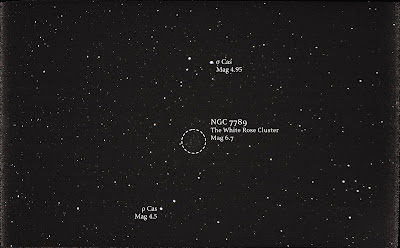 |
| NGC 7789, 73 subs, 54 darks, 67 bias, 300mm, f/5.6, 1.3 sec, ISO 1600 |
For having such a cool name, I was a little underwhelmed by the White Rose Cluster. It probably looks a lot better with faster glass and a higher resolution camera. It was easy to find right off of
Casseopia Cassiopea Cassiopeia (ugh I can never spell that).
I'm not as excited about Delta Cephei (δ) as I am about 1) my new preparation of the final image, and 2) my new knowledge of separation in arcseconds.
First, to get double stars with just my camera and a lens (the easiest and therefore most likely way I'll shoot them) I just take a single shot and don't stack the images. When I stack them, I lose resolution and color, so the stars look like little white cotton balls instead of points of light. Ok, they look MORE like cotton balls, they're not very pointy as it is. In this image, I stacked the background but then cropped out the double stars from a single frame, so it's the best of both worlds: Context background stars and higher resolution double stars.
Second, after shooting and failing to resolve some double stars last month, I looked up which ones I managed to get and which ones didn't turn out. I figured out my gear's limit to resolving double stars, so now I know ahead of time which ones I should even attempt.
The separation limit for my camera with 300mm lens is about 28" (arcseconds) and the limit for my 900mm scope is 14.4" (arcseconds) at prime focus - presumably even less visually.
 |
| Here's C16 again for posterity, already described in a previous post |









